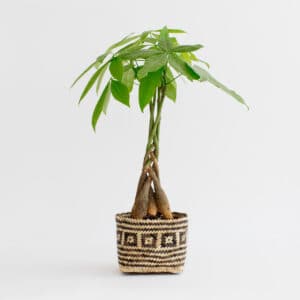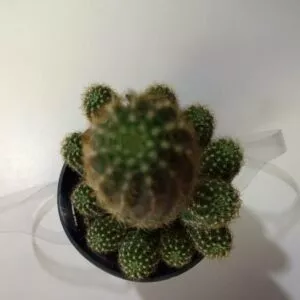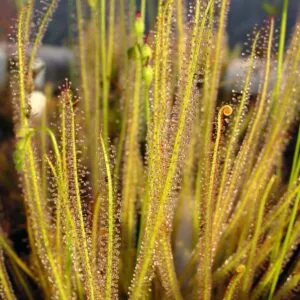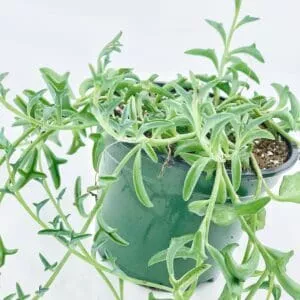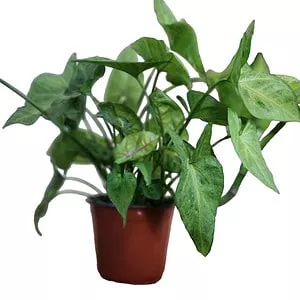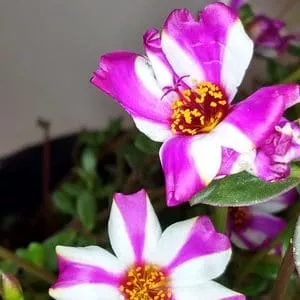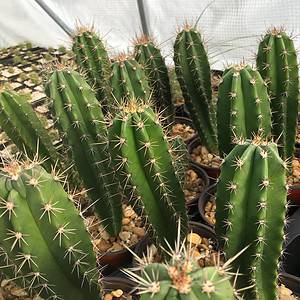No products in the cart.
Table of Contents
Date palms have forever been a great decorative solution for large courtyards and gardens due to their striking bushy fronds.
They come in various types and some date palms can produce credible fruits.
Some can grow up to be up to 20 ft high and require larger areas to grow as their roots need a lot of space, while others can be potted and kept indoors.
Date Palm Types

There are several Date palm varieties that are grown for their beauty and decorative properties. They differ in size and have slightly different fronds (i.e. some are more, others less arched).
Besides those, some dates fruit trees are grown for agricultural purposes.
The date tree that typically goes under the name of the date palm is Phoenix dactylifera. It is a fruit-giving date palm tree.
One of the most common date palms that is largely grown all over the world, and not only under adequate outdoor conditions, is the Pygmy Date palm.
It is a dwarf date palm variety and it can be grown indoors as well as outdoors. Yet, a potted variety is the popular one.
If you want that exotic tone in your home, the date palm is the one to go for.
Once you learn how to take care of it you will be able o enjoy it for years to come.
Date Palm Care Guide

We will take both Phoenix dactylifera and Pygmy date palm into consideration in this text since they are the most commonly cared for.
In stock In stock In stock In stock
$6.00
Sold By:
Smoot's Farm
Succulent Succulent Haworthia Herbacea 2″ Pot Live Plant
Only 5 available and it’s in 1 people’s basket Rated 4.89 out of 5 based on 27 customer ratings00
Sold By:
Smoot's Farm
$44.00
Sold By:
NEEPA HUT
6″ Braided Money Tree Plant + Planter Basket
Only 10 available and it’s in 3 people’s basket Rated 4.99 out of 5 based on 221 customer ratings06
Sold By:
NEEPA HUT
$11.99
Sold By:
Succulent Oasis
Cactus Plant Medium Chamaelobivia “Rose Quartz”
Rated 4.84 out of 5 based on 352 customer ratings02
Sold By:
Succulent Oasis
$12.99
Sold By:
BubbleBlooms
Pilea peperomioides / Chinese money plant / Chinese missionary plant
Only 993 available and it’s in 4 people’s basket Rated 4.81 out of 5 based on 279 customer ratings04
Sold By:
BubbleBlooms
Watering Needs
The general guideline for both plants is “less is more”.
Date palms can withstand longer periods of drought and once established, the date tree does need to be watered.
It uses its roots to gather water from the soil.
The same goes for Pygmy Date palm.
It does not like too much water, so you can let the soil dry out completely before you water it again.
Still, avoid leaving the soil drenched.
You can water as rarely as two times a month during the summer, and once a month during the colder, winter months.
Light and Temperature Requirements
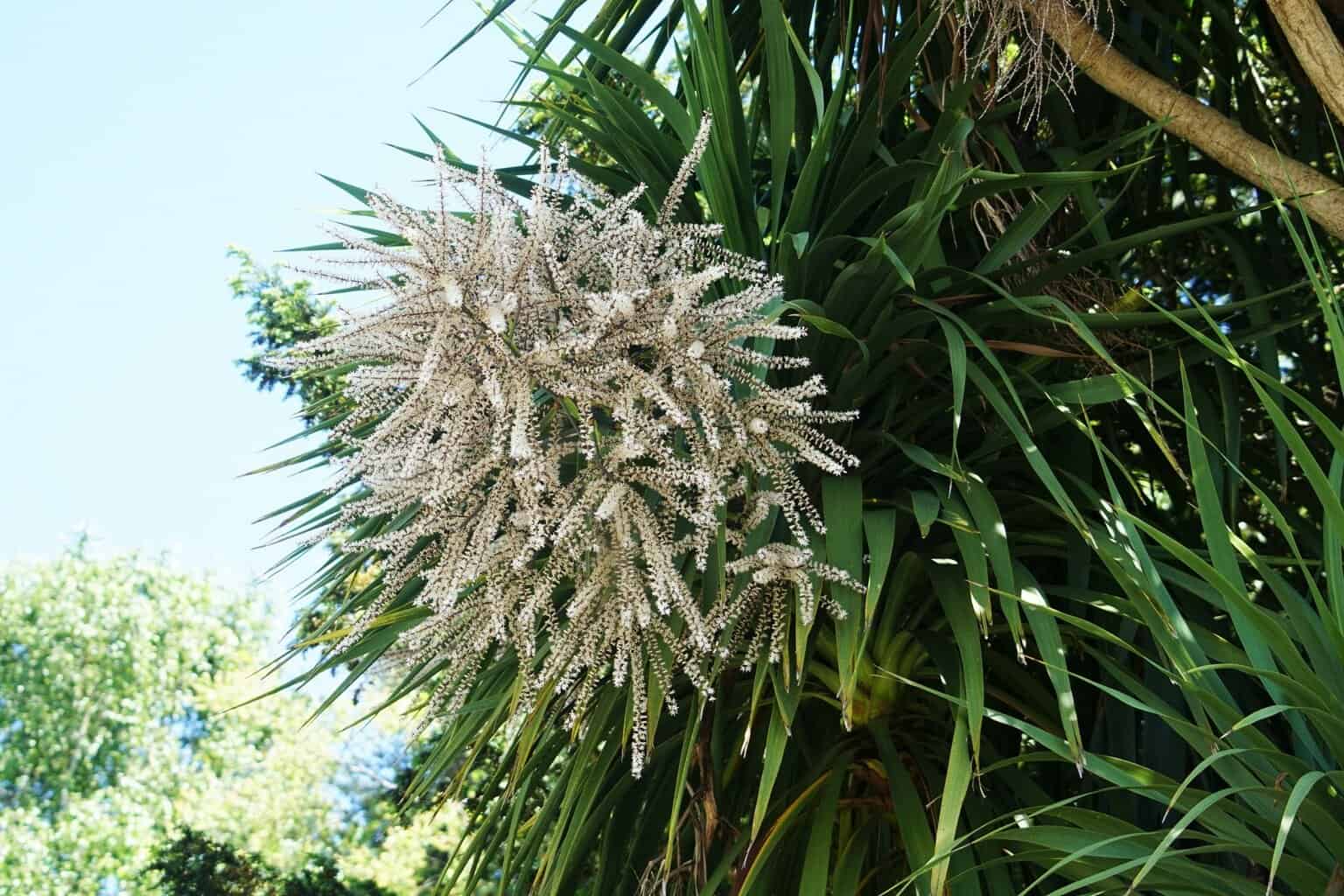
Light and temperature requirements differ largely between a date palm tree and a Pygmy date palm.
Date tree thrives in a hot environment with a lot of direct sun with little or no humidity.
It usually grows easily in appropriate climate conditions with warm nights and hot days.
Should temperatures fall below 20 degrees Fahrenheit, date palms can get frost damage and even die.
Pygmy date palm is even more restrictive when it comes to temperature.
It will not tolerate temperatures below 50 degrees Fahrenheit. Therefore, you will need to bring your potted dates indoors during the winter months.
Although the two plants belong to the same family, they do not have the same light requirements.
This is mostly based on the fact that they have different natural conditions.
The Pygmy palm tree grows lower, so it is logically shaded by other, taller trees.
This is why you should keep it in a partial or full shade even if you grow it as an outdoor plant.
Potted plants should be kept in bright, indirect sunlight preferably near an east-facing window.
Remember to avoid direct sunlight exposure.
In stock In stock In stock In stock
$18.00
Sold By:
Beauties & Beasts
Cactus Succulent- Haworthia maughanii x truncata
Rated 4.83 out of 5 based on 24 customer ratings00
Sold By:
Beauties & Beasts
$15.99
Sold By:
BubbleBlooms
Homalomena Selby, 4 inch, Variegated Queen of Hearts, shield plant
Rated 4.81 out of 5 based on 279 customer ratings00
Sold By:
BubbleBlooms
$20.00
Sold By:
Beauties & Beasts
Carnivorous- Drosera filiformis
Rated 4.83 out of 5 based on 24 customer ratings00
Sold By:
Beauties & Beasts
$19.99
Sold By:
BubbleBlooms
String of Dolphins! Curio x peregrinus / Dolphin necklace, flying dolphins / dolphin plant / Senecio hippogriff / String of Dolphins Plant
Rated 4.81 out of 5 based on 279 customer ratings03
Sold By:
BubbleBlooms
Soil and Fertilization
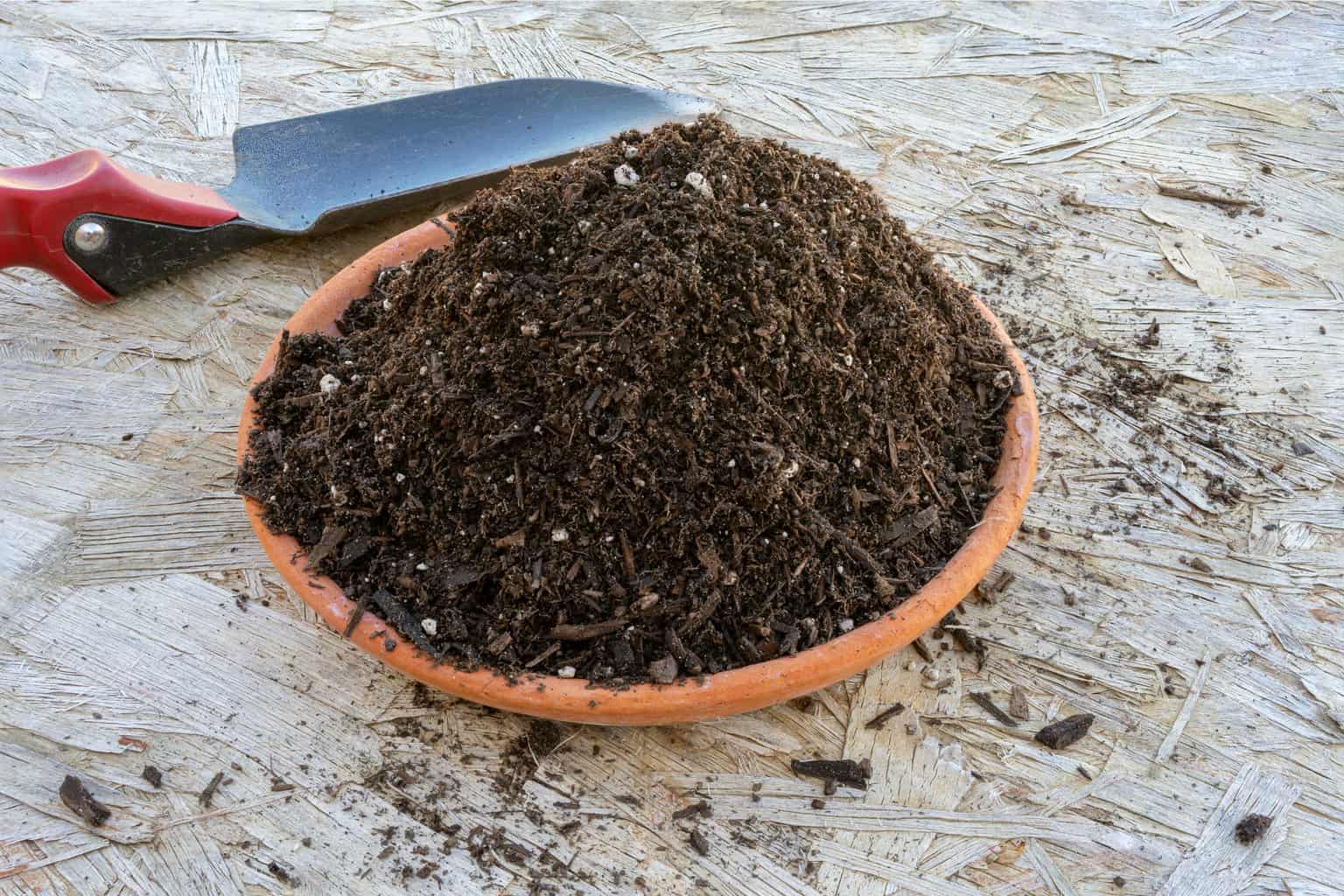
Both Date palm tree and Pygmy Date palm prefer the same type of soil.
The one that can be kept moist with larger drought periods rather than moisture-retaining soil.
Too much water can stunt the already slow growth and can cause the date tree not to produce fruits.
When you are planting a Date tree outdoors, dig a hole double the size of a root ball, place the tree inside and fill the hole with soil that is rich in organic matter.
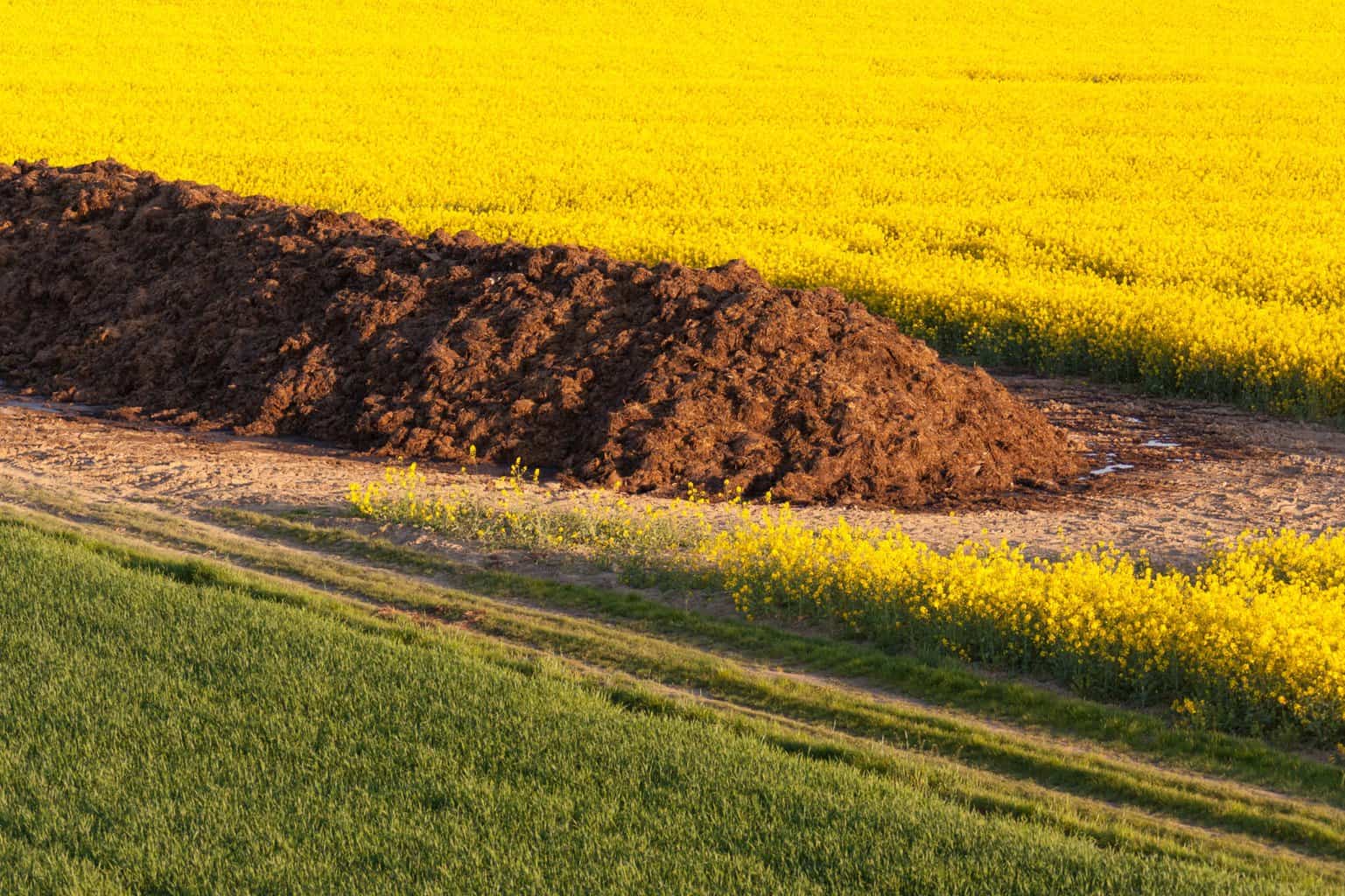
Manure is a good option for that. It provides nutrients and reduces the need for frequent fertilization.
You can fertilize once a year, in the spring or in summer with palm fertilizer or any other fertilizer that is rich in potassium.
It goes without saying that you should follow the instructions on the packaging carefully.
The same goes for other outdoor palm varieties.
Date Fruit
To be able to grow date trees for their fruit you need to have both male and female plants in close proximity. Otherwise, you will not get the fruit regardless of how well you care for the tree.
Even if it does not produce fruits, the Date tree still retains its decorative properties as its cousins that are not typically grown for their fruits.
In stock In stock (can be backordered) In stock
$20.00
Sold By:
PotHedz Plants
Syngonium podophyllum ‘Bold Illusion’
Rated 4.96 out of 5 based on 106 customer ratings00
Sold By:
PotHedz Plants
Free Shipping
$17.00
Sold By:
Gar-Zen Botanical Design
Purslane Edible “Raspberry Parfait” Herb Ships Free.
Only 24 available and it’s in 1 people’s basket Rated 4.86 out of 5 based on 49 customer ratings00
Sold By:
Gar-Zen Botanical Design
Free Shipping
$39.99
Sold By:
Aloha Hawaii Orchids
$44.99Okika Flower: Captivating Fragrance & Visual Splendor
Rated 4.65 out of 5 based on 268 customer ratings00
Sold By:
Aloha Hawaii Orchids
Repotting Date Palm
Date palms do not like repotting.
They are slow-growing so you would not need to do it very often anyway. Once every two years could be more than enough if you want your indoor plant to grow.
When you are repotting, be very careful since Date palm roots are very delicate and can be damaged easily.
Place the plant in a pot that is one size larger.
When the plant has reached the size you wanted, you can stop repotting completely.
What you can do instead of it is scrape the top layer of the soil (carefully) and add a layer of new soil to help with adding nutrients and continue fertilizing twice during the growing season.
Pruning and Propagation
Date plant propagation is done through seeds and it takes over 5 years for the plant to be established and ready to be transplanted from the nursery.
This is why Date palm is usually purchased and not grown in home conditions.
When it comes to pruning, not much of it is required. Occasionally removing brown or damaged fronds is all it takes, really.
With the date, the tree makes sure to remove all the fallen fronds and fruits so they wouldn’t rot directly under the soil.
Common Problems of Date Palm
Palm trees in general are very hardy plants so they do not suffer from too many problems.
When you take care that it is appropriately lit and watered, the only possible thing remaining are the pests.
The pests do sometimes attack the plants and you should remove them using adequate insecticide as soon as you notice the problem.
Whether you want to buy, sell or simply reach out to other plant enthusiasts, Plantly is the right place to be!
In stock (can be backordered) In stock In stock Only 1 left in stock
Free Shipping
$15.99
Sold By:
Gar-Zen Botanical Design
Euphorbia Pencil Firestick Plant Ships Free
Rated 4.86 out of 5 based on 49 customer ratings01
Sold By:
Gar-Zen Botanical Design
$19.99
Sold By:
BubbleBlooms
Hoya Curtisii, Very Rare Limited Live plant, Super Filled in 4 inch pot
Rated 4.81 out of 5 based on 279 customer ratings00
Sold By:
BubbleBlooms
$29.99
Sold By:
BubbleBlooms
Neon Pothos, 6 inch, devil’s ivy, hunter’s rove
Rated 4.81 out of 5 based on 279 customer ratings00
Sold By:
BubbleBlooms
$60.00
Sold By:
Ralph Plants
$70.00Alocasia Tigrina (Growers Choice)
Sold By:
Ralph Plants

